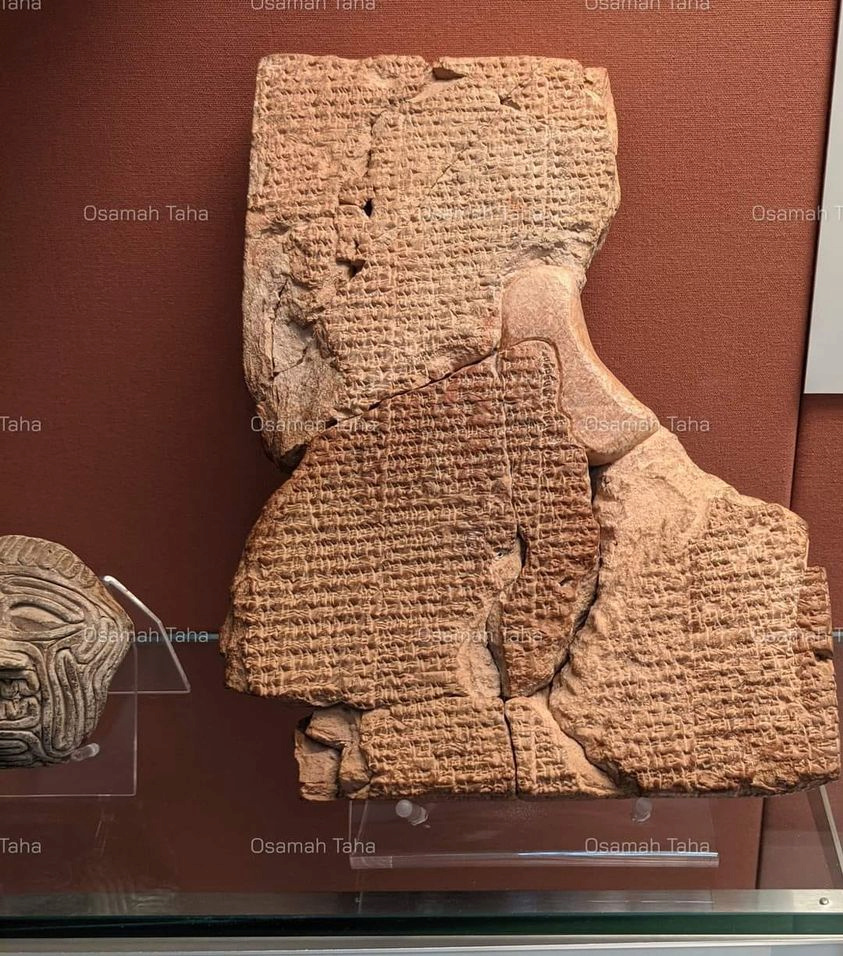The Epic of Atrahasis

One of the three tablets from the Epic of Atrahasis. The epic is about the story of the creation of humanity and how the gods decided to cause the great flood. In the first tablet of the epic, it talks about the creation of the gods Anu, Enlil, and Enki, and how they were assigned the rule of the earth, the sky, and the fresh waters, and how their gods were assigned. The land of Enlil belongs to some of the minor gods, called the Denkir, with the task of maintaining the rivers and agricultural lands. These gods rebelled against hard work after forty years. Instead of punishing the Denkir, the god Enki suggested that humans be created to carry out these hard works. The goddess Mami was tasked with mixing clay statues with the blood and flesh of the slain god Kashtu, meaning to create. Humans, and then the board continues to mention the overpopulation of humans and the epidemics that have occurred
As for the second tablet, it talks about the god Enlil sending famine to humans to reduce their number, which continued for 1,200 years. After that, he decides to bring about the flood, and the story of the flood continues in the third tablet, and how Atrahasis saved humanity from the flood.
The tablets were written in the time of the Babylonian king Emizadoca (the great-grandson of Hammurabi) in the year 1635 BC. The tablets were found in the city of Sippar (Tell Abu Heba). Part of the face of the cedar forest guard, Hummambaba, appears in the picture as the Babylonians imagined him in the ancient period 1700-1800 BC. Birth
The tablet is on display in the British Museum.
Source: websites

